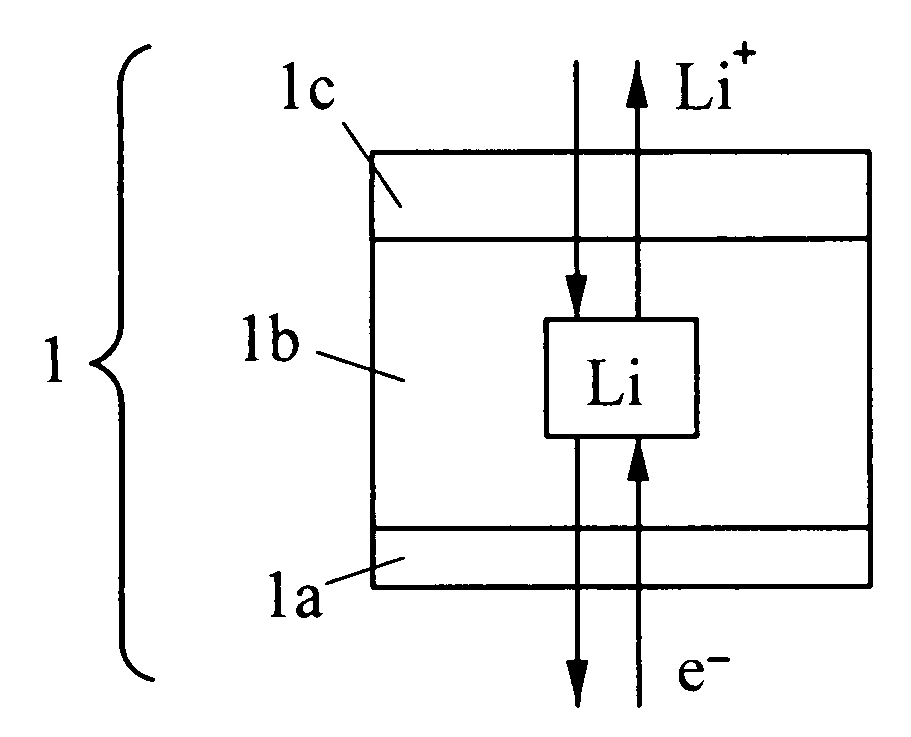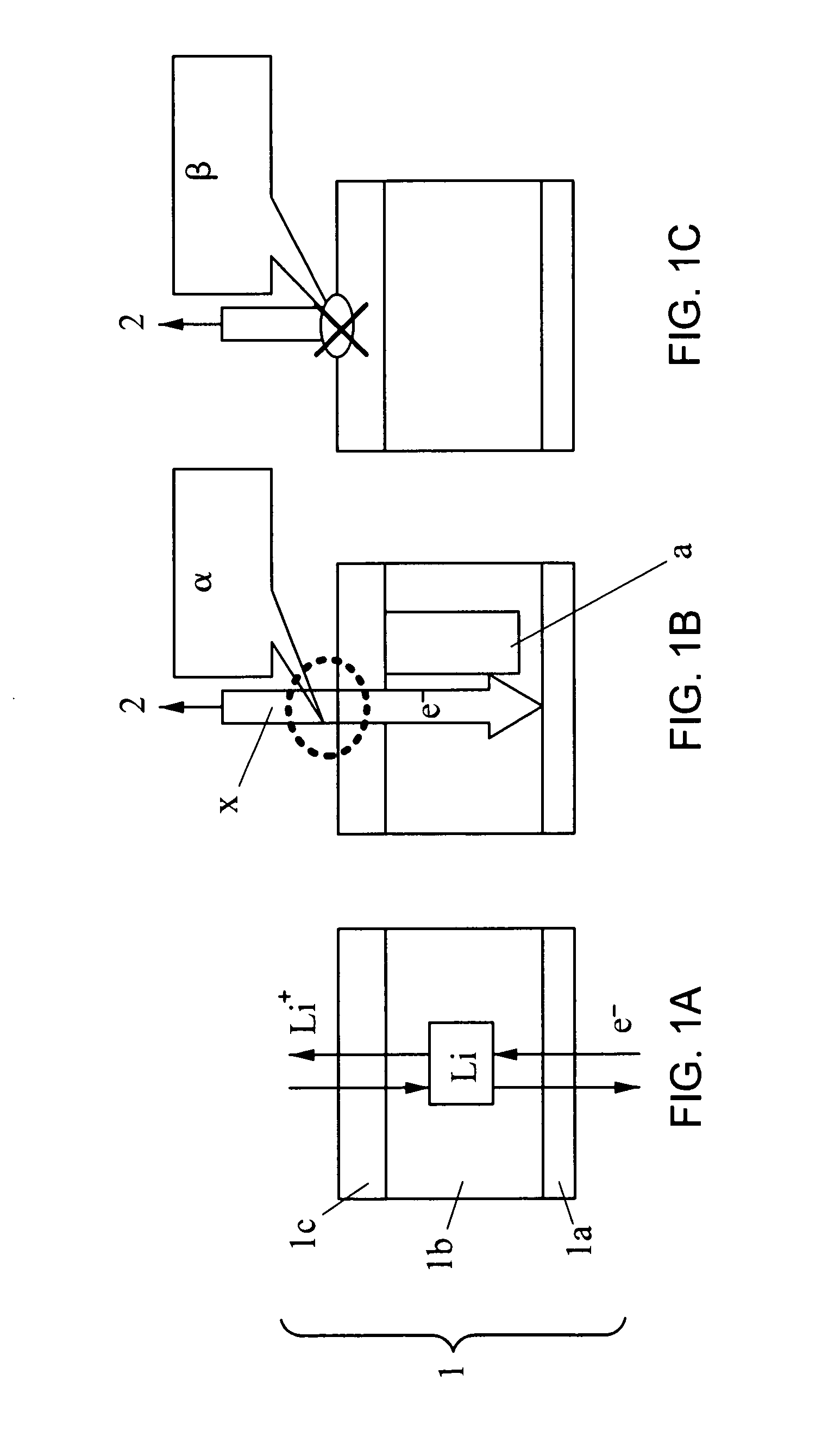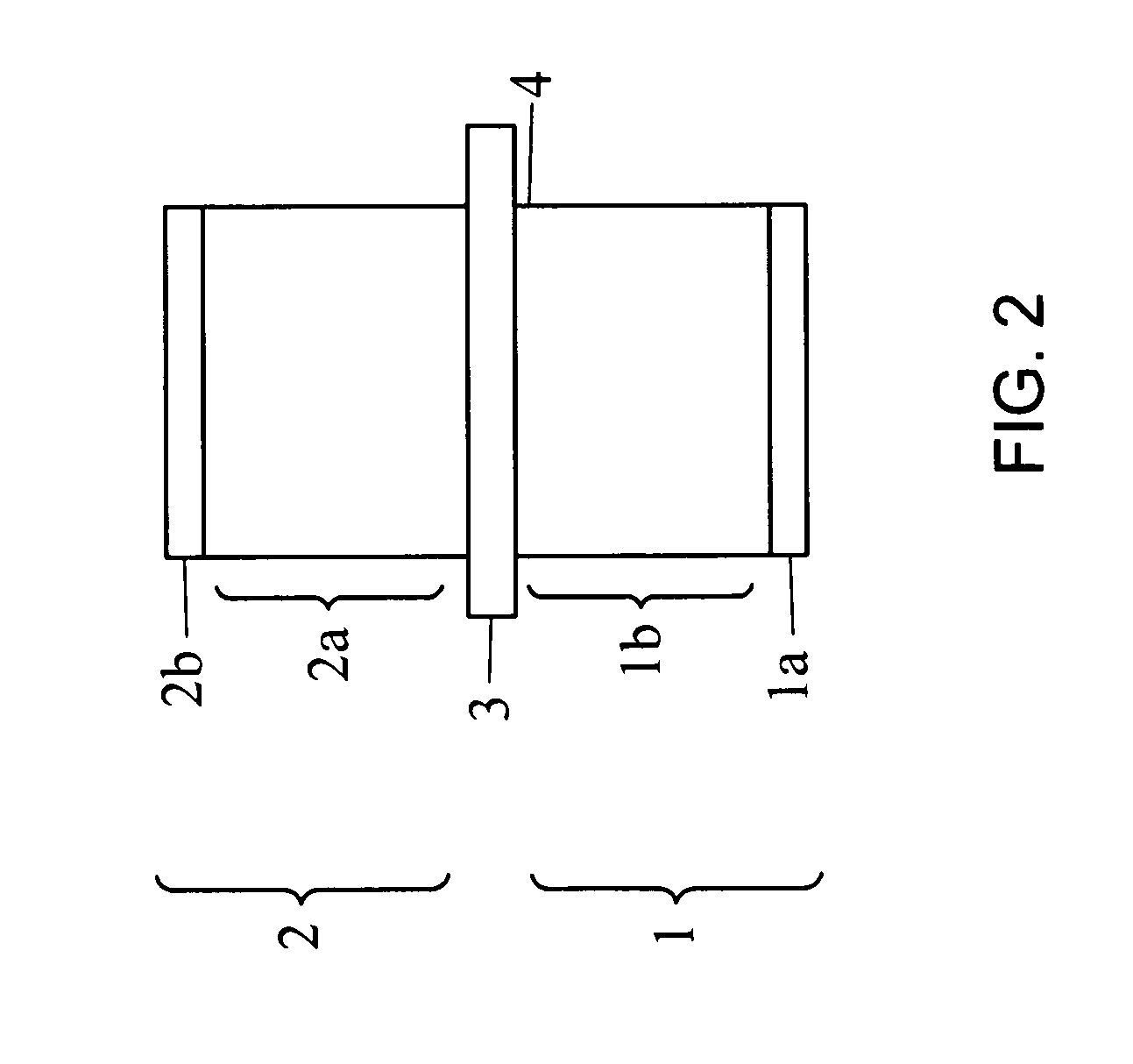Nonaqueous electrolyte secondary battery
a secondary battery and electrolyte technology, applied in the direction of non-aqueous electrolyte accumulator electrodes, cell components, electrical apparatus, etc., can solve the problems of secondary battery falling into an abnormal state, secondary battery molten down, and metal layer sandwiching the resin film breaking, etc., to increase resistance, increase resistance, and accelerate abnormal heat generation
- Summary
- Abstract
- Description
- Claims
- Application Information
AI Technical Summary
Benefits of technology
Problems solved by technology
Method used
Image
Examples
example 1
[0090]A producing method and a structure of the negative electrode in which a layer of the material with increased resistance at high temperature is imparted to the negative electrode active material layer surface are described in Example 1. A schematic view of the produced negative electrode is shown in FIG. 2.
[0091]Natural graphite (having an average particle diameter of 20 μm and a BET specific surface area of 3 m2 / g) and artificial graphite (having an average particle diameter of 6 μm and a BET specific surface area of 17 m2 / g) were used as the negative electrode active material and the conductive material, respectively. The negative electrode active material layer was formed out of a paste made by adding carboxymethyl cellulose (trade name: #2200, manufactured by Daicel Chemical Industries, Ltd.) as the thickening material and a styrene-butadiene rubber (trade name: TRD2001, manufactured by JSR Corporation) as the aqueous binder to the active material and the conductive materia...
example 2
[0102]Too low a voidage of the active material layer makes an electrolytic solution content insufficient and affects the electric resistance greatly. Example 2 was performed for obtaining an optimum range thereof.
[0103]A negative electrode was produced in the same manner as in Example 1 except for modifying only the voidage into 2%, 20%, 40% and 50%.
[0104]With regard to Example 2, the constitution of the negative electrode is shown in Table 2.
TABLE 2NegativeNegativeDistribution ofelectrodeelectrodeMaterial withmaterial withcurrentactiveConductiveincreased resistanceincreased resistancecollectormaterialagentat high temperatureat high temperatureExample 2copper foilnaturalartificialgold-coated resinunevenly distributedgraphitegraphiteparticleon active materiallayer surface
[0105]Here, a charge rate capacity ratio under a low output (low current:0.1 C) plotted with the voidage is shown in FIG. 5A. However, the charge rate capacity ratio means A / B×100(%) when the C rate for one charge an...
example 3
[0109]The resistance value between the negative electrode surface and the current collector at the normal temperature (approximately 25° C.) was measured for each of the negative electrode produced by the same method as in Example 1 and the negative electrode produced by the same method as in Example 1 except for providing no layer of the material with increased resistance at high temperature. Next, these negative electrodes were heated to 160° C. and the resistance value was measured in this state in the same manner as above.
[0110]As a result of measurement, the negative electrode with no layer of the material with increased resistance at high temperature provided exhibited no changes in the resistance value. On the contrary, with regard to the negative electrode of Example 1, heating to 160° C. melted the resin composing the layer of the material with increased resistance at high temperature, and the resistance value became three times as large as the resistance value at the norma...
PUM
| Property | Measurement | Unit |
|---|---|---|
| temperature | aaaaa | aaaaa |
| temperature | aaaaa | aaaaa |
| particle diameter | aaaaa | aaaaa |
Abstract
Description
Claims
Application Information
 Login to View More
Login to View More - R&D
- Intellectual Property
- Life Sciences
- Materials
- Tech Scout
- Unparalleled Data Quality
- Higher Quality Content
- 60% Fewer Hallucinations
Browse by: Latest US Patents, China's latest patents, Technical Efficacy Thesaurus, Application Domain, Technology Topic, Popular Technical Reports.
© 2025 PatSnap. All rights reserved.Legal|Privacy policy|Modern Slavery Act Transparency Statement|Sitemap|About US| Contact US: help@patsnap.com



